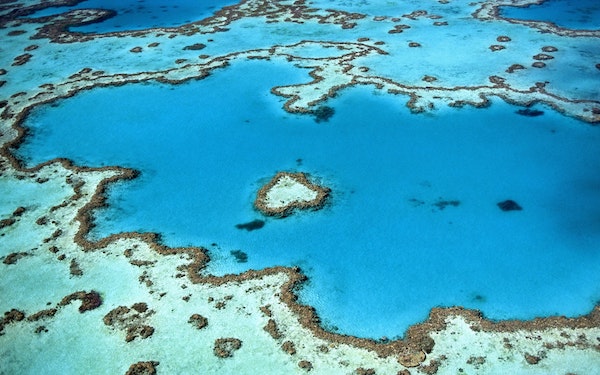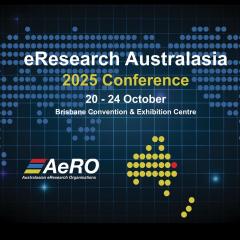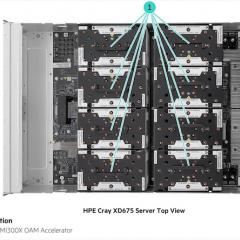
The Great Barrier Reef’s potential for climate change mitigation through its catchments’ capacity for carbon storage has been revealed in a world-first study led by Deakin University and involving The University of Queensland.
As part of a collaborative project with ten partners from academia and industry called Queensland Blue (QLDBlue), researchers have calculated the blue carbon capacity of coastal wetlands in Great Barrier Reef (GBR) catchment areas.
Blue carbon is the organic carbon stored in the soils of coastal wetlands. Seagrass meadows, tidal marshes and mangrove forests are among the most efficient carbon sinks. However, these ecosystems are declining in Queensland, and globally, due to coastal development. Rising sea levels also pose a threat.
QLDBlue’s research has revealed that seagrass meadows and mangrove forests within GBR catchment coastal ecosystems act as a natural carbon sink, storing approximately 137 million tonnes of carbon, or 9%–13% of Australia’s blue carbon stock. This is most notable given the area encompasses only 4%–6% of the total extent of Australia’s coastal wetlands.
The ground-breaking mapping project has also revealed the region’s potential to deliver further carbon storage opportunities: By restoring blue carbon ecosystems in 90,000 hectares of land throughout GBR catchments, an additional five million tonnes of carbon dioxide could be captured by 2100. This would reduce Australia’s greenhouse gas emissions and play a role in slowing the impact of climate change.
Dr Micheli Duarte de Paula Costa from Deakin University’s Blue Carbon Lab led the research, alongside Blue Carbon Lab Director Professor Peter Macreadie.
During her work on the project, Dr Costa returned to former employer UQ as a visiting academic at the School of Biological Sciences, with Professor Catherine Lovelock.
It was at UQ where Micheli was first introduced to high-performance computing. “Not having used HPCs before, I undertook RCC’s introductory [HPC] workshop, which was very useful to help me understand the resources available and provided a broad overview of the HPC systems at UQ,” she said.
At the November 2019 workshop, RCC HPC Manager Dr David Green discussed how Micheli’s simulation workload could be best accommodated on Tinaroo, an HPC specifically for UQ researchers’ use.
Due to the complexity of QLDBlue’s modelling, David later collaborated directly with Micheli to devise a plan for how to set up and run the simulations on Tinaroo and deliver them in a reasonable timeframe.
“The advice and help of Dr David Green to use Tinaroo to run our model predictions helped us to undertake our analysis in matter of a few days, compared to months of work if using a traditional computer system,” said Micheli.
“The main problem that I was having in this project was the time needed to run my spatial predictions in a traditional computer system, and the fact that I would not be able to spatially evaluate our predictions. Tinaroo was key for us to achieve our results quickly.”
Tinaroo was used to predict soil carbon stocks throughout the distribution of seagrasses and mangroves within the GBR catchments at a 15-metre spatial resolution. It was also used to evaluate the predictive performance of the spatial results by running 100 bootstrapped models. “This would not have been possible before using Tinaroo,” said Micheli.
Micheli and David divided the model area of interest for the research into 50 tiles, and Tinaroo allowed them to run the predictions independently with the workload distributed across many machines and performed simultaneously.
Beyond David’s hands-on involvement, any further issues Micheli had with Tinaroo, she accessed the RCC Support Desk and UQ’s weekly Hacky Hour meetup for help.
Micheli and her team’s research was recently published in the journal Global Change Biology, with co-authors from UQ, Deakin, James Cook University, Griffith University and Edith Cowan University. RCC’s Dr David Green is noted as a co-author.
The QLDBlue program, completed last year, was a multi-sector research and development collaboration comprising academia, project developers and industry. Research was led by Deakin University in collaboration with UQ, JCU, CSIRO, HSBC, Qantas, the Australian Government Department of Industry, Science, Energy and Resources, NQ Dry Tropics, the Great Barrier Reef Foundation and GreenCollar.
QLDBlue was delivered as part of the Pilot Projects Program of the Land Restoration Fund, supported by the Queensland Government and with additional funds from HSBC and Qantas Future Planet.
QLDBlue’s research is crucial to guide future policy and investments in blue carbon in Queensland.
This article is partly based on “Carbon treasure revealed at Great Barrier Reef” by Deakin University.



